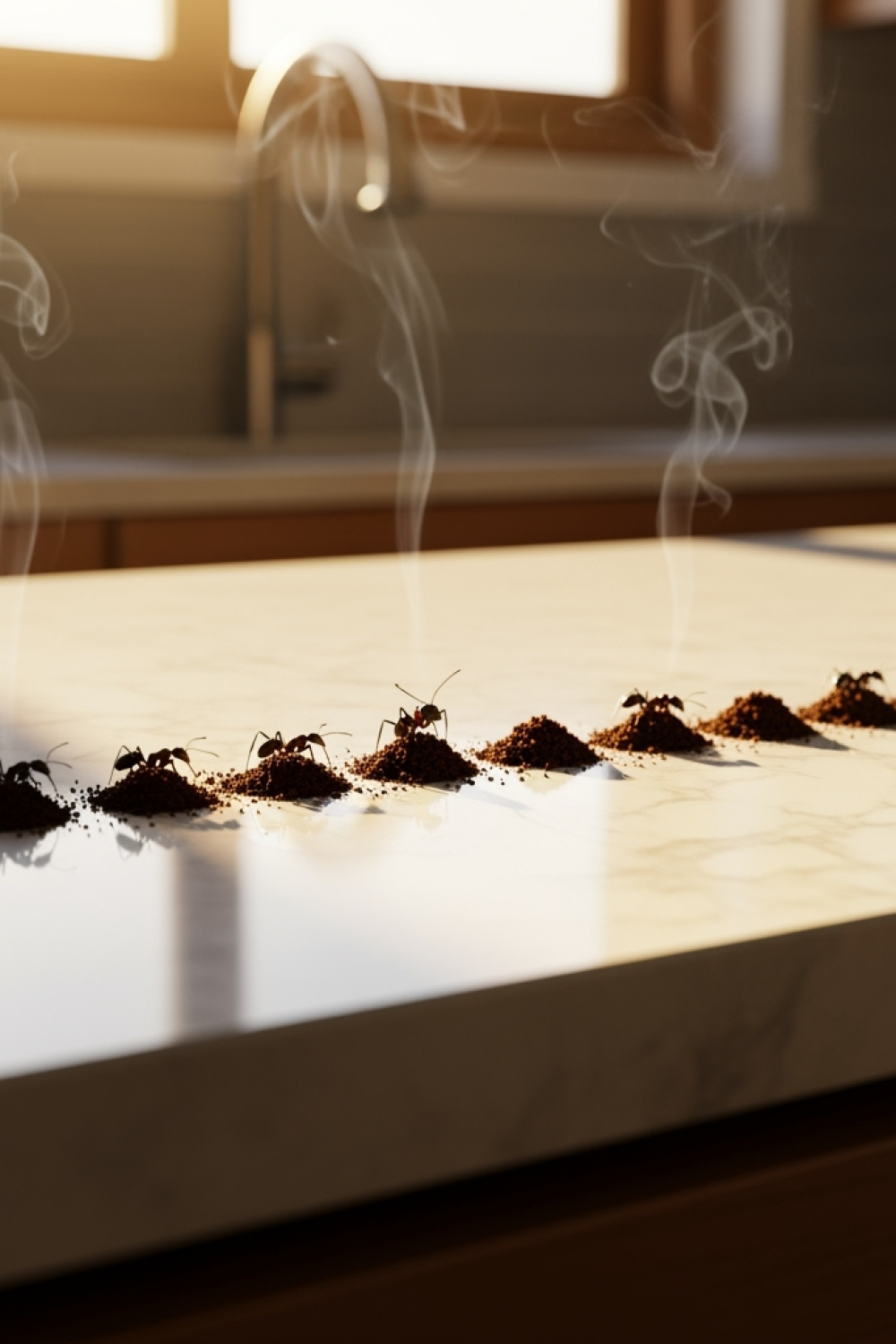Want to save this recipe?
Enter your email below and we’ll send the recipe straight to your inbox!
Introduction: A Natural Solution to an Annoying Problem
Have you ever noticed a line of ants crossing your kitchen and felt that mix of frustration and helplessness? These tiny invaders, though harmless individually, can quickly become a collective nuisance in our homes. Before rushing to harsh chemical products, did you know that the solution might be found in your used coffee filter? This eco-friendly and economical trick is gaining popularity, but is it really effective? Let’s discover together what science tells us about this revisited ancestral method.
Used Coffee Grounds: A Natural Barrier Against Ants
Used coffee grounds aren’t just waste from your morning beverage; they’re also a natural ant repellent that has been the subject of several scientific studies. Research conducted at the University of California has shown that certain compounds in coffee, particularly caffeine and diterpenes, disrupt insects’ nervous systems and act as natural repellents.
What’s particularly interesting is that coffee grounds work on multiple levels: their strong smell masks the pheromones that ants use to communicate, their grainy texture creates an unpleasant physical barrier for their sensitive feet, and their natural chemical compounds effectively disorient them.
How to Use Coffee Grounds Against Ants
Creating a Protective Barrier
Collect your used coffee grounds and let them dry completely in the open air. Damp grounds could develop mold and attract other pests. Once dry, generously sprinkle them in strategic locations: house entrances, windowsills, wall cracks, or any other potential entry point for ants. Create a continuous line about 2-3 cm wide for optimal effectiveness.
Preparing a Liquid Repellent Solution
To enhance the effect of dry grounds or to treat vertical surfaces, prepare a solution by steeping 1/2 cup of fresh coffee grounds in 4 cups of hot water for 30 minutes. Filter and pour into a spray bottle. Spray this solution on paths taken by ants and at potential entry points.
Making Natural Traps
To target particularly affected areas, create small traps by mixing coffee grounds with a little honey or sugar. Place this mixture in small dishes near infested areas. The ants will be attracted by the sugar but repelled by the coffee compounds, creating confusion and disorientation in the colony.
Common Mistakes to Avoid
Neglecting Complete Drying of the Grounds
Damp grounds can develop mold and create other sanitary problems. Always make sure they are perfectly dry before use. Spread them in a thin layer on a tray and let them dry naturally for 24-48 hours, or accelerate the process in the oven at a very low temperature.
Forgetting to Regularly Renew the Treatment
The effectiveness of coffee grounds diminishes over time, especially after rainfall or in humid environments. Remember to renew your ant barrier every 2-3 days to maintain its effectiveness, and immediately after rainfall if the grounds are outdoors.
Limiting Yourself to Coffee Grounds Alone
For maximum effectiveness, combine coffee grounds with other natural repellents like cinnamon, white vinegar, or peppermint essential oils. This multi-barrier approach significantly strengthens your defense against ants.
Additional Benefits of Coffee Grounds
Beyond their repellent action against ants, coffee grounds offer many ecological and practical advantages:
- Natural Fertilizer: Enriches your garden or indoor plants with nitrogen and other essential minerals
- Body Exfoliant: Used in homemade cosmetics for soft skin
- Natural Deodorizer: Effectively absorbs odors from refrigerators or shoes
- Economical: Repurposes a daily waste, avoiding the purchase of costly chemicals
- Safe: Unlike chemical insecticides, presents no risk to children, pets, or the environment
Expert Opinions in Entomology and Ecological Gardening
According to Professor Martin Dubois, entomologist at the University of Montreal: “Coffee grounds constitute an interesting ecological alternative to conventional insecticides. Their bioactive compounds, particularly caffeine, effectively disrupt ant behavior, although their effectiveness varies depending on the species.”
Marie Laporte, an expert in ecological gardening, adds: “I encourage my clients to use coffee grounds not only against ants but also to enrich their compost. It’s a solution perfectly aligned with the principles of circular economy and sustainable gardening.”
Quick Summary & Practical Conclusion
Coffee grounds represent a simple, economical, and ecological solution against ant invasions. Their effectiveness relies on three mechanisms: olfactory disruption, physical barrier, and natural chemical repellent action. To maximize effectiveness, make sure to use them dry, renew the application regularly, and ideally combine them with other natural repellents.
Don’t wait any longer! The next time you prepare your coffee, carefully save those grounds that could become your best ally against ants. A home free from harmful chemicals and ants is within reach!
Frequently Asked Questions
Can coffee grounds kill ants?
No, they primarily act as a repellent by disrupting their orientation and communication systems, but are not lethal to them.
How long does the repellent effect last?
The effect can last from 2 to 7 days depending on environmental conditions, particularly humidity and precipitation which can reduce its effectiveness.
Does it work against all ant species?
Effectiveness varies by species. Studies show better action against black garden ants and carpenter ants, but less effectiveness against certain tropical ants.
Can instant coffee be used instead?
Instant coffee contains fewer active repellent compounds than freshly used coffee grounds and will therefore be significantly less effective.

